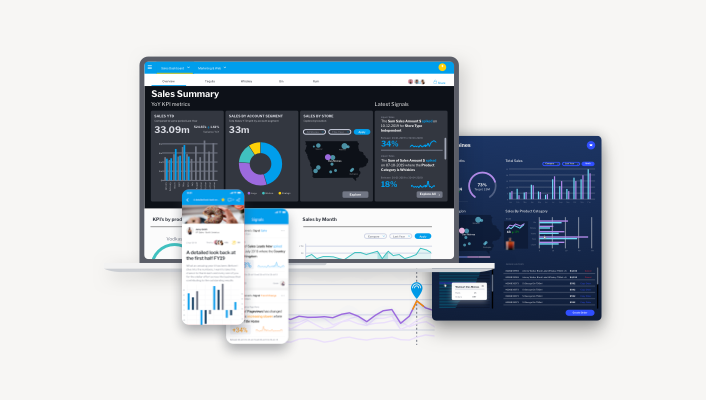
It's time for the augmented consumer
The old expectations around analytics as a separate tool rather than a tailored part of the user experience is changing fast. Yellowfin CEO Glen Rabie shares his insights on just how impactful the shift to the augmented consumer will be.
One of the changes that we've seen happening in the analyst space recently is a huge shift in thinking. Gartner in particular is now talking about augmented consumers and multi-experience, augmented analytics. This is interesting because they’re talking about the business user and how they want to work and consume data. In the past, it was all about the data analyst, but focusing on users opens up an entirely new level of thinking.
The paradigm shift from IT to self-service BI
At Yellowfin, we’ve been talking about augmented consumers, or the business user, for years. Business users want more than just dashboards. They want sophisticated and streamlined self service analytics tools that help them find insights independently.
Traditionally, you worked in a BI tool, separately from your workflows. But business users want to use analytics within the business processes and applications that they’re working in. As a result, the analytics that can be delivered to the end user can be really tailored to their experience. It can be automated and you can run algorithms to help people make decisions and take actions.
So, why has it taken the industry so long to get here?
The big vendors were specialists - all they did was BI and analytics. Back in time it was Business Objects, Cognos and Tableau, but now we’ve got mega vendors, like Google, Amazon and Salesforce buying analytics to deliver as part of a full stack of applications.
Enterprise software vendors are actually owning the analytics market and building pre-packaged applications to meet the needs of their customers. The result is we've seen a lot of consolidation so that mega vendors can own their end to end process as well. For example, we've seen Salesforce buy Tableau and Atlassian buy Chartio.
Read more: What is the augmented consumer?
Historically, every enterprise also had to build their own reports and help the end user understand what was going on. But now that's flipping and almost every enterprise software vendor is building analytics into their product - and that expertise is being delivered directly to the business user upfront. There will still be a gap, which is the overall enterprise analysis about how the business is doing. This is complex and data analysts will still need to do this, but I think the vast majority of the everyday analytical workload will be done by people using products with analytics packaged for them.
The future of data insights is in the user's hands
The tension that will come out of this is for the mega vendors who own their own BI product - it's unlikely that someone else will want to use their analytics product. ServiceNow used to have Tableau as one of their options; Tableau is now owned by Salesforce. I suspect they’re no longer going to open the door and allow their customers to use Tableau because they're competing head to head with Salesforce. The same thing happened when SAP bought Business Objects - people stopped using Crystal Reports.

At one stage, there was a plethora of standalone BI vendors, but that pool is shrinking rapidly. This gives small vendors the opportunity to bubble up but that will take a long time to happen. It takes years to build a good product, you can’t simply spin up another analytics product tomorrow, and there are no shortcuts to solving enterprise problems.
So, if you're a software vendor today, one of the biggest challenges you're going to have is to find an independent BI software vendor that can help you to achieve your embedded, automated needs and can deliver enterprise analytics to your customers.
How Yellowfin empower BI users: Analyst Recognition
Don't just take our word for it: See for yourself just how Yellowfin embeds, automates and augments analytics for all users in the latest reports from Gartner, Ventana Research, Forrester and more leading industry experts.